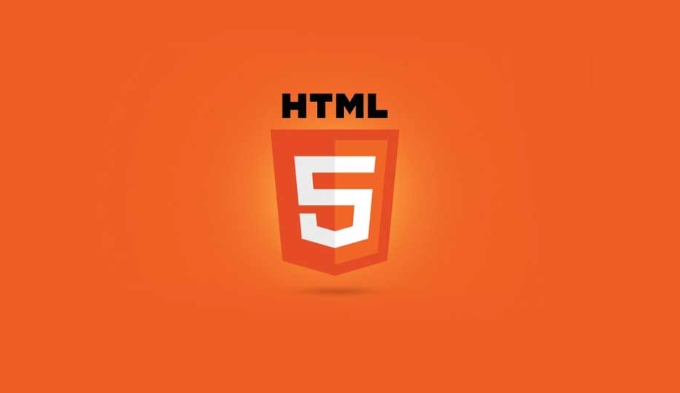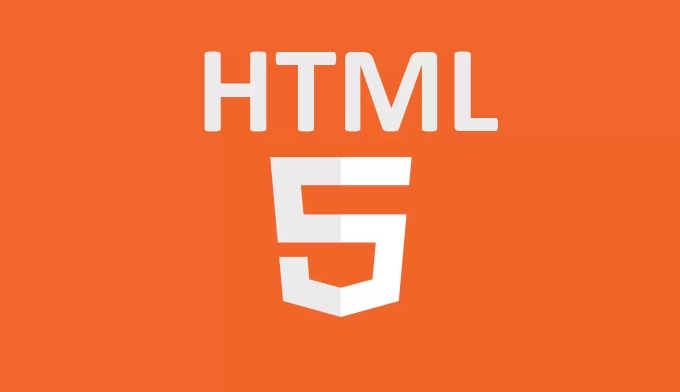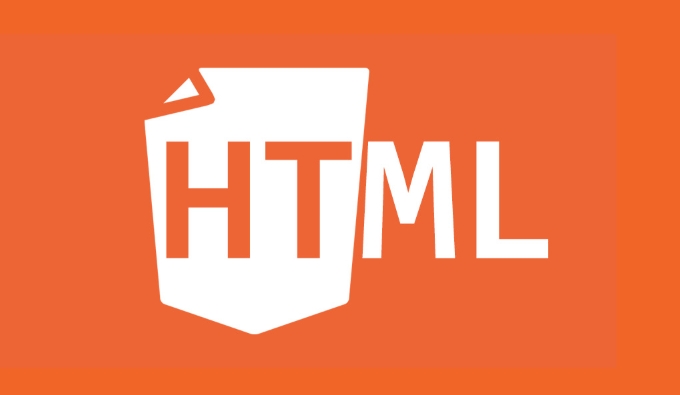Intersection Observer is a practical API provided by H5 for lazy loading and animation triggering. 1. Lazy loading pictures: By monitoring whether the element enters the viewport, assign the real image address from data-src to src to reduce the loading pressure on the first screen; 2. Animation trigger: When the element enters the field of view, add class names to start CSS animation, save resources and improve experience; 3. Usage tips: reuse Observer instances, cancel monitoring in time, pay attention to compatibility and mobile adaptation issues. Compared to scroll events, Intersection Observer has better performance and concise code.

Intersection Observer is a very practical API provided by H5, which is especially suitable for lazy loading and animation triggering things related to "whether elements appear in the viewport". Compared with the previous method of using scroll event to listen to getBoundingClientRect, it performs better and has a simpler code.

Lazy loading pictures: Reduce the loading pressure on the first screen
The most common application scenario for lazy loading is pictures. When the page is just opened, it does not need to load all images. It only starts loading when the user scrolls near a certain image, which can significantly increase the speed of the first screen.
The implementation method is very simple: first put the real image address in data-src attribute, and set src to a placeholder (such as a transparent gif). Then listen for these image elements through Intersection Observer. Once it enters the viewport range, data-src is assigned to src and cancels the listening to avoid repeated triggers.

const images = document.querySelectorAll('img[data-src]');
const observer = new IntersectionObserver((entries, observer) => {
entries.forEach(entry => {
if (entry.isIntersecting) {
entry.target.src = entry.target.dataset.src;
observer.unobserve(entry.target);
}
});
}, {
rootMargin: '0px 0px 200px 0px' // Can load in advance to improve the experience});
images.forEach(img => observer.observe(img)); Note that rootMargin is used here to expand the detection area down by 200px, so that the image can be loaded in advance before it has been completely rolled to the visual area, making the user experience smoother.
Animation trigger: enter the field of view and play it
In addition to lazy loading of images, Intersection Observer is also very suitable for controlling the playback timing of animations. For example, if you want to make an animation effect of "the element fades in after entering the viewport", you can add a class name to the target element when you hear it appear, and the CSS animation will automatically start.

const sections = document.querySelectorAll('.animate-on-scroll');
const observer = new IntersectionObserver((entries) => {
entries.forEach(entry => {
if (entry.isIntersecting) {
entry.target.classList.add('in-view');
}
});
}, {
threshold: 0.1
});
sections.forEach(section => observer.observe(section));Cooperate with CSS:
.animate-on-scroll {
opacity: 0;
transition: opacity 0.6s ease-out;
}
.animate-on-scroll.in-view {
opacity: 1;
} The advantage of this method is that the animation will not be executed from the beginning, nor will it waste resources to run the animation when the user does not see it. And you can flexibly control the trigger conditions, such as setting threshold to decide "how much you see is considered a trigger".
A few tips for using
- Try to reuse Observer instances : If you want to listen to multiple elements, you don’t need to new one Observer for each, just pass the configuration uniformly.
- Timely unobserve : There is no need to continue listening after the picture is loaded. Tweaking
unobservecan reduce performance overhead. - Pay attention to compatibility : Modern browsers basically support it, but if you want to be compatible with IE, you may have to find polyfill or downgrade solutions.
- Pay attention to resize and orientationchange on mobile terminals : Sometimes the device rotates or zooms will change the element position, remember to recalculate the observation status.
Basically that's it. The core idea of Intersection Observer is "wait until you see me". It is more efficient and easier to maintain than listening to scroll events frequently. Whether it is lazy loading or animation triggering, it is a basic skill worth mastering.
The above is the detailed content of H5 Intersection Observer for Lazy Loading and Animations. For more information, please follow other related articles on the PHP Chinese website!

Hot AI Tools

Undress AI Tool
Undress images for free

Undresser.AI Undress
AI-powered app for creating realistic nude photos

AI Clothes Remover
Online AI tool for removing clothes from photos.

Clothoff.io
AI clothes remover

Video Face Swap
Swap faces in any video effortlessly with our completely free AI face swap tool!

Hot Article

Hot Tools

Notepad++7.3.1
Easy-to-use and free code editor

SublimeText3 Chinese version
Chinese version, very easy to use

Zend Studio 13.0.1
Powerful PHP integrated development environment

Dreamweaver CS6
Visual web development tools

SublimeText3 Mac version
God-level code editing software (SublimeText3)
 Using ARIA attributes with HTML5 semantic elements for accessibility
Jul 07, 2025 am 02:54 AM
Using ARIA attributes with HTML5 semantic elements for accessibility
Jul 07, 2025 am 02:54 AM
The reason why ARIA and HTML5 semantic tags are needed is that although HTML5 semantic elements have accessibility meanings, ARIA can supplement semantics and enhance auxiliary technology recognition capabilities. For example, when legacy browsers lack support, components without native tags (such as modal boxes), and state updates need to be dynamically updated, ARIA provides finer granular control. HTML5 elements such as nav, main, aside correspond to ARIArole by default, and do not need to be added manually unless the default behavior needs to be overridden. The situations where ARIA should be added include: 1. Supplement the missing status information, such as using aria-expanded to represent the button expansion/collapse status; 2. Add semantic roles to non-semantic tags, such as using div role to implement tabs and match them
 Integrating CSS and JavaScript effectively with HTML5 structure.
Jul 12, 2025 am 03:01 AM
Integrating CSS and JavaScript effectively with HTML5 structure.
Jul 12, 2025 am 03:01 AM
HTML5, CSS and JavaScript should be efficiently combined with semantic tags, reasonable loading order and decoupling design. 1. Use HTML5 semantic tags, such as improving structural clarity and maintainability, which is conducive to SEO and barrier-free access; 2. CSS should be placed in, use external files and split by module to avoid inline styles and delayed loading problems; 3. JavaScript is recommended to be introduced in front, and use defer or async to load asynchronously to avoid blocking rendering; 4. Reduce strong dependence between the three, drive behavior through data-* attributes and class name control status, and improve collaboration efficiency through unified naming specifications. These methods can effectively optimize page performance and collaborate with teams.
 HTML5 video not playing in Chrome
Jul 10, 2025 am 11:20 AM
HTML5 video not playing in Chrome
Jul 10, 2025 am 11:20 AM
Common reasons why HTML5 videos don't play in Chrome include format compatibility, autoplay policy, path or MIME type errors, and browser extension interference. 1. Videos should be given priority to using MP4 (H.264) format, or provide multiple tags to adapt to different browsers; 2. Automatic playback requires adding muted attributes or triggering .play() with JavaScript after user interaction; 3. Check whether the file path is correct and ensure that the server is configured with the correct MIME type. Local testing is recommended to use a development server; 4. Ad blocking plug-in or privacy mode may prevent loading, so you can try to disable the plug-in, replace the traceless window or update the browser version to solve the problem.
 Embedding video content using the HTML5 `` tag.
Jul 07, 2025 am 02:47 AM
Embedding video content using the HTML5 `` tag.
Jul 07, 2025 am 02:47 AM
Embed web videos using HTML5 tags, supports multi-format compatibility, custom controls and responsive design. 1. Basic usage: add tags and set src and controls attributes to realize playback functions; 2. Support multi-formats: introduce different formats such as MP4, WebM, Ogg, etc. through tags to improve browser compatibility; 3. Custom appearance and behavior: hide default controls and implement style adjustment and interactive logic through CSS and JavaScript; 4. Pay attention to details: Set muted and autoplay to achieve automatic playback, use preload to control loading strategies, combine width and max-width to achieve responsive layout, and use add subtitles to enhance accessibility.
 Using HTML5 Semantic Elements for Page Structure
Jul 07, 2025 am 02:53 AM
Using HTML5 Semantic Elements for Page Structure
Jul 07, 2025 am 02:53 AM
Using HTML5 semantic tags can improve web structure clarity, accessibility and SEO effects. 1. Semantic tags such as,,,, and make it easier for the machine to understand the page content; 2. Each tag has a clear purpose: used in the top area, wrap navigation links, include core content, display independent articles, group relevant content, place sidebars, and display bottom information; 3. Avoid abuse when using it, ensure that only one per page, avoid excessive nesting, reasonable use and in blocks. Mastering these key points can make the web page structure more standardized and practical.
 Explaining the HTML5 `` vs `` elements.
Jul 12, 2025 am 03:09 AM
Explaining the HTML5 `` vs `` elements.
Jul 12, 2025 am 03:09 AM
It is a block-level element, suitable for layout; it is an inline element, suitable for wrapping text content. 1. Exclusively occupy a line, width, height and margins can be set, which are often used in structural layout; 2. No line breaks, the size is determined by the content, and is suitable for local text styles or dynamic operations; 3. When choosing, it should be judged based on whether the content needs independent space; 4. It cannot be nested and is not suitable for layout; 5. Priority is given to the use of semantic labels to improve structural clarity and accessibility.
 Accessing User Location with HTML5 Geolocation API
Jul 07, 2025 am 02:49 AM
Accessing User Location with HTML5 Geolocation API
Jul 07, 2025 am 02:49 AM
To obtain user location information, you must first obtain authorization. When using HTML5's GeolocationAPI, the first step is to request user permission. If the user refuses or fails to respond, an error should be handled and a prompt should be given; after successful authorization, the Position object includes coords (latitude, longitude, etc.) and timestamp; you can use watchPosition to monitor location changes, but you need to pay attention to performance issues and clear the listener in time. 1. Authorization requires the user to explicitly allow it to trigger the getCurrentPosition method request; 2. Process error.code when rejected or errored and prompt the user; 3. After success, position.coords provides location data; 4.watc
 Saving the content of an HTML5 canvas as an image.
Jul 08, 2025 am 02:13 AM
Saving the content of an HTML5 canvas as an image.
Jul 08, 2025 am 02:13 AM
Yes, you can save its contents as an image using the HTML5Canvas built-in toDataURL() method. First, call canvas.toDataURL ('image/png') to convert the canvas content to a base64 string in PNG format; if JPEG or WebP format is required, the corresponding type and quality parameters such as canvas.toDataURL ('image/jpeg', 0.8) can be passed in. Then you can achieve download by creating a dynamic link and triggering a click event: 1. Create an element a; 2. Set the download attribute and href as image data; 3. Call the click() method. Note that this operation should be triggered by user interaction.






